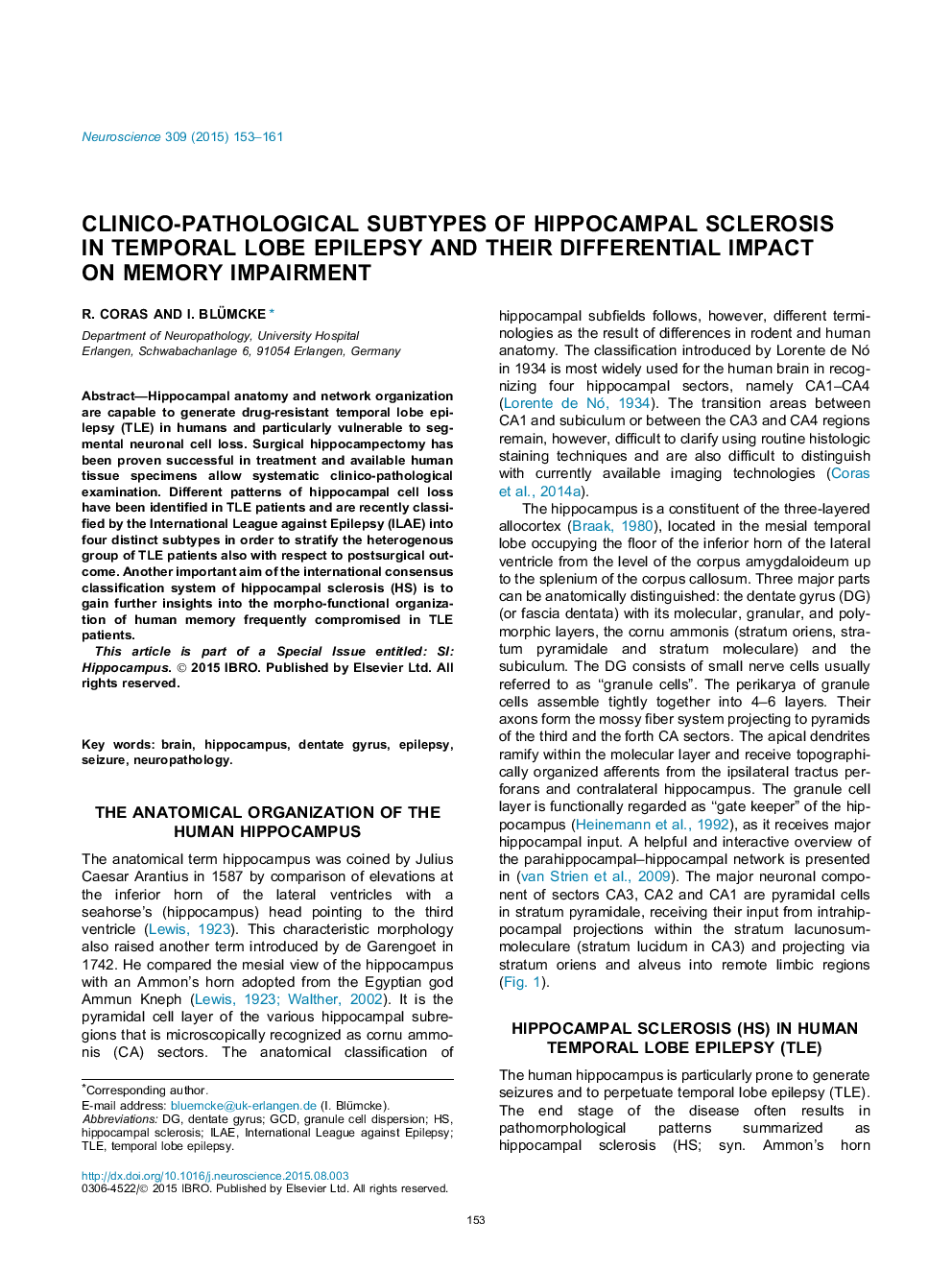| Article ID | Journal | Published Year | Pages | File Type |
|---|---|---|---|---|
| 6271759 | Neuroscience | 2015 | 9 Pages |
â¢Hippocampal anatomy/network organization can generate drug-resistant temporal lobe epilepsy.â¢The International League against Epilepsy stratifies TLE patients into four groups.â¢Subfield specific analysis of hippocampal sclerosis will help to better classify TLE phenotypes and clinical variability.
Hippocampal anatomy and network organization are capable to generate drug-resistant temporal lobe epilepsy (TLE) in humans and particularly vulnerable to segmental neuronal cell loss. Surgical hippocampectomy has been proven successful in treatment and available human tissue specimens allow systematic clinico-pathological examination. Different patterns of hippocampal cell loss have been identified in TLE patients and are recently classified by the International League against Epilepsy (ILAE) into four distinct subtypes in order to stratify the heterogenous group of TLE patients also with respect to postsurgical outcome. Another important aim of the international consensus classification system of hippocampal sclerosis (HS) is to gain further insights into the morpho-functional organization of human memory frequently compromised in TLE patients.
